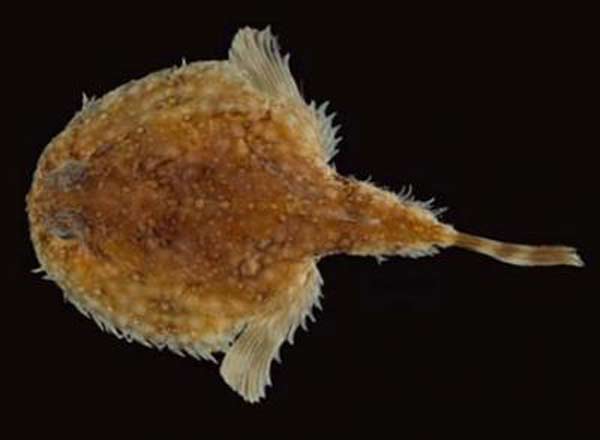
Oil Gusher Threatens Newly-Discovered Fish Species

Two previously unknown species of fish have been identified in the waters along the Gulf Coast in areas threatened by the Deepwater Horizon oil spill.
The two newly-named species (Halieutichthys intermedius and H. bispinosus) are a type of fish called pancake batfish.
With craggy faces, stumpy fins for "walking" the seafloor, and an excreted fluid that lures in prey, these bottom dwellers might be terrifying were it not for their dainty size. Small enough to fit in the palm of your hand, the pancake-flat fishes feed on tiny invertebrates in the shallow waters off the southern U.S. coastline, from Louisiana to North Carolina.
While scientists were able to learn enough about these closely-related fish to separate them into two species, at least one of the newfound species (H. intermedius) may remain something of an enigma because of the oil pouring into Gulf waters.
"Its entire habitat is in the region of the oil spill," said Prosanta Chakrabarty of Louisiana State University, one of the scientists who identified the two species.
Chakrabarty told OurAmazingPlanet that he worries the spill will kill off the fishes' food supply, and that the oil itself may reach the shallows where the batfish live. "I don't know how they'll be able to get around it," he said.
The two newly-described pancake batfish species were previously thought to be a single, widespread species. Chakrabarty said he first began to suspect scientists might not have the full story when he and colleague Hsuan-Ching Ho noticed variations in batfish preserved in jars in museums.
Sign up for the Live Science daily newsletter now
Get the world’s most fascinating discoveries delivered straight to your inbox.
"So first chance I had I got on a boat, went out on the Gulf, and collected some fresh specimens," Chakrabarty said.
Sure enough, his research uncovered three distinct species of pancake batfish, instead of just the one. (The third is H. aculeatus.)
John Sparks, curator of Ichthyology at the American Museum of Natural History in New York City and one of the study's authors, said this discovery is surely not an anomaly.
"If we are still finding new species of fishes in the Gulf, imagine how much diversity — especially microdiversity — is out there that we do not know about," Sparks said.
Chakrabarty said further investigation will prove difficult.
"Now you need Hazmat training just to get to the place where we used to conduct our research," he said.
The descriptions of the two new species are detailed in the Journal of Fish Biology.
- Gallery – Gulf Oil Spill: Animals at Risk
- Oil's Effects on Endangered Species Possibly 'Mind-Boggling'
- 7 Strange and Sad Facts About the Gulf Oil Spill
This article was provided by OurAmazingPlanet, a sister site to LiveScience.









